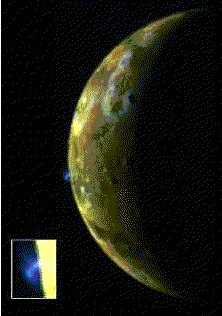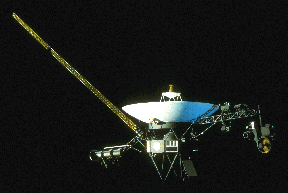Click on image for full size
NASA
Io Discoveries with Voyager
When Voyager flew by Jupiter, there was little expectation that the moon, Io, would exhibit active volcanism. The exception was a prediction, by three brave scientists, that Voyager would find evidence that Io might be hot enough for volcanoes. The paper explained reasons for the excess heating of Io, and was published just two weeks prior to the Io encounter.
To everyone's surprise, when Voyager passed by, it actually caught the Prometheus geyser going off.
Later the three scientists who made the prediction were asked why they had not waited 2 weeks, until after Voyager's encounter, to publish the paper, to avoid the risk of being wrong. They replied that they had full confidence in their prediction.
The Galileo mission to Jupiter continues the exploration of the volcanism of Io.










